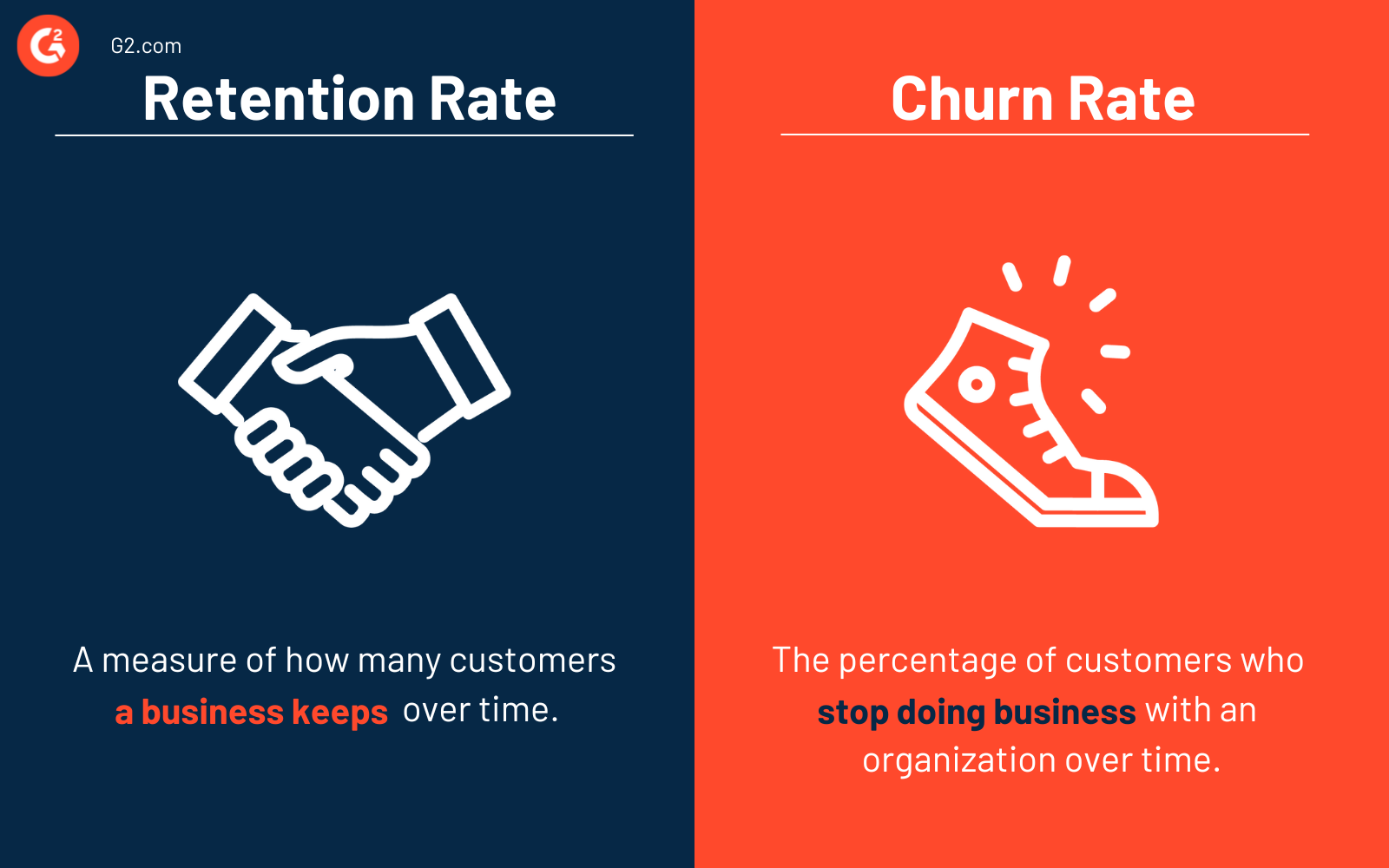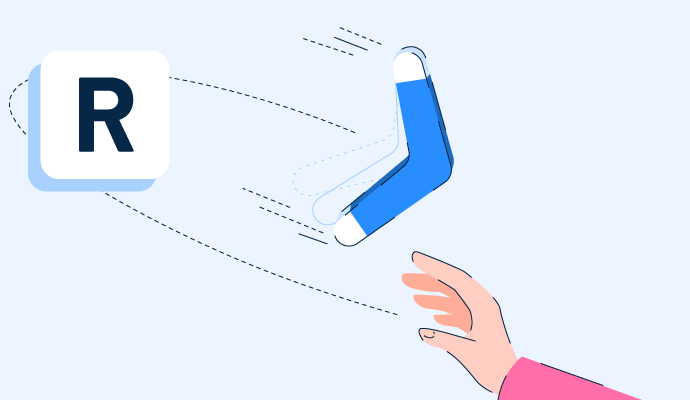What is retention rate?
A retention rate is a metric that calculates the percentage of customers who continue paying for a service or product during a set period. Also known as a customer retention rate, it’s a key indicator of a company’s success in keeping its consumers engaged and satisfied.
Retention rates are vital for software as a service (SaaS) and retail industries in which success hinges on its ability to keep customers returning month after month. High retention rates generally lead to better customer satisfaction, more revenue, and increased long-term success.
Companies use proactive customer retention rate software to monitor and improve retention rate. These platforms use artificial intelligence to identify customer sentiment and predict churn risks. Plus, they offer analytics for a close look at retention history.
How to calculate retention rate
The retention rate is a key performance indicator (KPI) because it shows that customers are satisfied enough with the product or service to continue to return. To calculate the retention rate for a specific timeframe, the following formula is applied:
Retention Rate = ((Number of customers at end of period – number of new customers acquired during that time) / Number of customers at start of period) x 100
For example, a SaaS company had 600 subscribers at the beginning of a quarter, and 525 were still active at the end. The company also acquired 20 new users during that time. Their retention rate would be ((525 - 20)/600) x 100, or 84.2%.
Benefits of tracking retention rate
Organizations of all sizes benefit from tracking customer retention rates; even those with an already high rate can strive to improve it. That’s because it’s a critical metric that informs business strategy and results in:
- More cost savings. Traditional marketing wisdom holds that retaining current customers is more cost-effective than acquiring new ones. By tracking retention rates, organizations identify ways to improve the customer experience (CX). As a result, they reduce churn, retain customers, and spend less on marketing efforts to attain new customers.
- Increased loyalty. Companies know what works and doesn't by watching how retention rates change in response to campaigns and initiatives. Then, they can create responsive strategies to encourage customers to return repeatedly.
- Increased acquisition. Satisfied customers are more likely to refer others to a company. As companies track and improve retention rates, they typically see referrals and acquisition rates go up.
- More revenue. Returning customers often spend more; they know they enjoy a company’s product, service, or experience and buy confidently. Satisfied, loyal customers often refer others, bringing in more revenue.
Retention rate best practices
Improving customer retention rate influences the long-term success of a business, so it makes sense that companies of all sizes keep this metric top-of-mind. Some techniques to improve retention rate and build a loyal customer base include:
- Providing high-quality products or services. Clever marketing campaigns or well-timed social ads might provide a short-term boost, but customers won’t return if they don’t like the goods or services they received. Companies should work toward continuous improvement, making small tweaks or adding desirable features.
- Gathering feedback. The best way to find out what customers want is to ask. Organizations should ask customers for their opinions via surveys, website feedback widgets, and questionnaires, and then they should follow through by making requested changes.
- Personalizing communication. Customers expect a personalized touch. Companies that want to increase customer retention rates should send customized emails with product recommendations and special promotions to stand out.
- Creating a loyalty program. When people think about loyalty programs, they often think about e-commerce and retail stores. Customers create an account and earn points toward exclusive discounts and freebies, increasing their incentive to continue shopping at that company. But loyalty programs also work well for subscription and service-based businesses. Organizations can provide early access to new product features or referral bonuses for those in the loyalty program.
- Providing multichannel customer support. Customers expect to ask questions and resolve issues at any time of day. Organizations should offer multiple ways to provide customer support, such as chatbots, a self-serve knowledge base, phone lines, and email. They can also engage in social listening and deliver quick, supportive messages on customers’ favorite social channels. If customers know the company helps them quickly, they feel more confident making continued purchases.
Retention rate vs. churn rate
Retention rate and churn rate are two vital metrics that help organizations understand the loyalty of their customer base.

Retention rate measures how many customers a business keeps over time, while churn rate is the percentage of customers who stop doing business with an organization over time. Churn occurs for many reasons, including product quality issues or poor customer service.
Retention rate is the inverse of churn. If a company’s retention rate is 85% for a given period, the churn rate is 15%. Whether a business focuses on retention, churn, or both depends on the objectives. Tracking customer retention helps organizations determine how well customers like the product, service, and experience; focusing on churn works well if a company specifically tries to stop a current outflow of customers to a competitor.
Learn more ways to stop customer churn and increase your retention rate.

Kelly Fiorini
Kelly Fiorini is a freelance writer for G2. After ten years as a teacher, Kelly now creates content for mostly B2B SaaS clients. In her free time, she’s usually reading, spilling coffee, walking her dogs, and trying to keep her plants alive. Kelly received her Bachelor of Arts in English from the University of Notre Dame and her Master of Arts in Teaching from the University of Louisville.



















